Eriophyllum wallacei, Wallace Eriophyllum
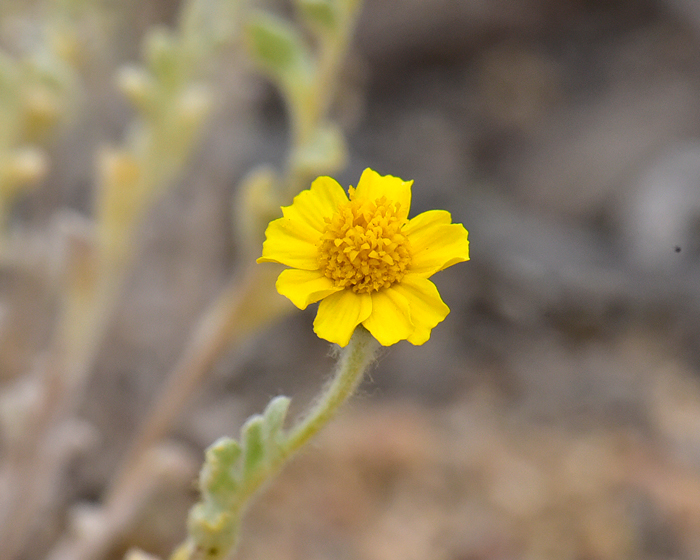
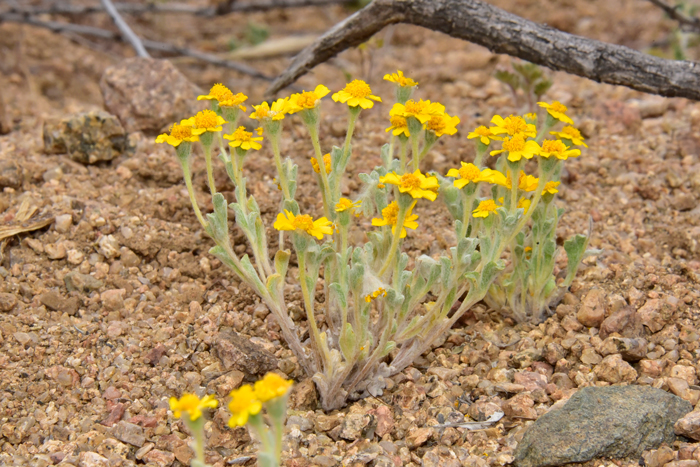
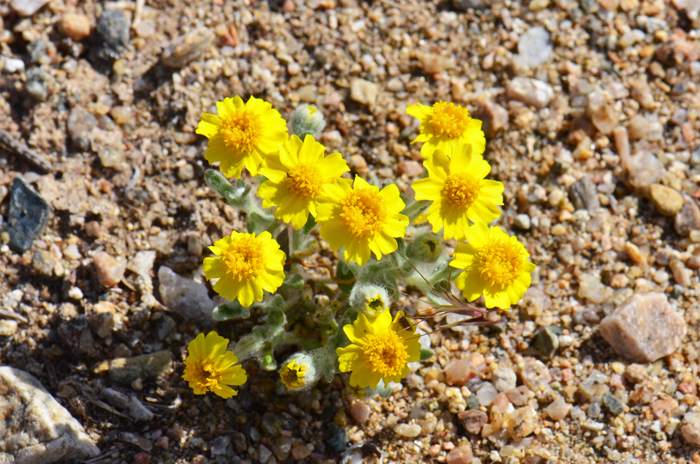
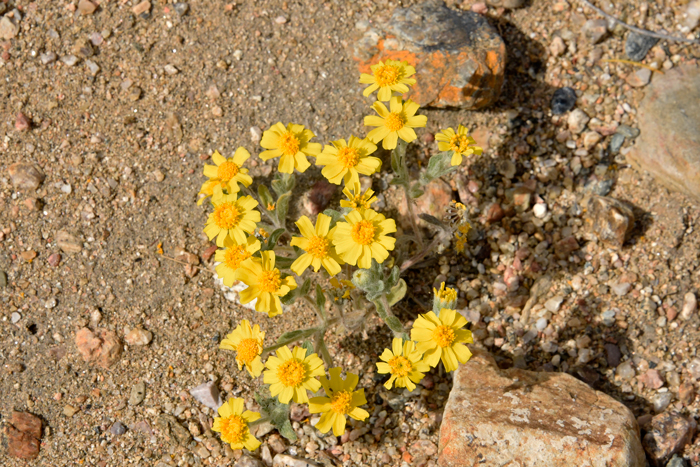
Scientific Name: Eriophyllum wallacei
Common Name: Wallace Eriophyllum
Also Called: Woolly Daisy, Woolly Easterbonnets
Family: Asteraceae, Sunflower Family
Synonyms: (Antheropeas wallacei, Bahia wallacei, Eriophyllum wallacei var. calvescens, Eriophyllum wallacei var. rubellum, Eriophyllum aureum)
Status: Native
Duration: Annual
Size: Up to 6 inches (15 cm) or so
Growth Form: Forb/herb; plants erect to spreading or ascending; plants often tufted or woolly.
Leaves: Green, gray-green; leaf shape variable, obovate to spatulate; leaf edges or margins entire or 3-lobed.
Flower Color: Yellow; solitary flowers; flower heads with both ray (5 to 8) and disk (20 to 30) florets; fruit is a cypsela.
Flowering Season: March to June; December to July in California
Elevation: 100 to 7,800 feet (30-2,400 m)
Habitat Preferences: Mesas and plains; sandy or gravelly openings, pinyon-juniper, creosote-bush, chaparral, sagebrush, and Joshua Tree communities.
Recorded Range: Wallace Eriophyllum is native mostly to the southwestern United States in AZ, CA, NV, UT, WY. This species is also native to Baja California and Mexico.
North America & US County Distribution Map for Eriophyllum wallacei, as Antheropeas wallacei.
North America species range map for Wallace Eriophyllum, Eriophyllum wallacei:
North American range map courtesy of Virginia Tech, Dept. of Forest Resources & Environmental Conservation
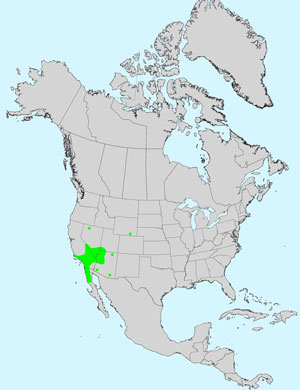
U.S. Weed Information: Unknown
Invasive/Noxious Weed Information: Unknown
Wetland Indicator: Unknown
Threatened/Endangered Information: Unknown
Genus Information: In North America there are 12 species and 12 accepted taxa overall for Eriophyllum (includes genus Antheropeas as a synonym). Worldwide, The Plant List includes 13 accepted species names and a further 52 of infraspecific rank for the genus.
The genus Eriophyllum was published by Mariano Lagasca y Segura in 1816.In the Southwestern United States: Arizona has 5 species of genus, California has 13 species, Nevada has 5 species, New Mexico has 1 species, Texas has 0 species, Utah has 3 species. Statistics include genus Antheropeas as a synonym. All data is approximate and subject to taxonomic changes.
Comments:
In Southwest Desert Flora also see; White Woolly Daisy, Eriophyllum lanosum and Pringle's Wooly Sunflower, Eriophyllum pringlei.
The genus Eriophyllum was published by Mariano Lagasca y Segura in 1816.
The species epithet “wallacei” (wal'lacei:) is named in honor of William Allen Wallace, (1815-1893) .

